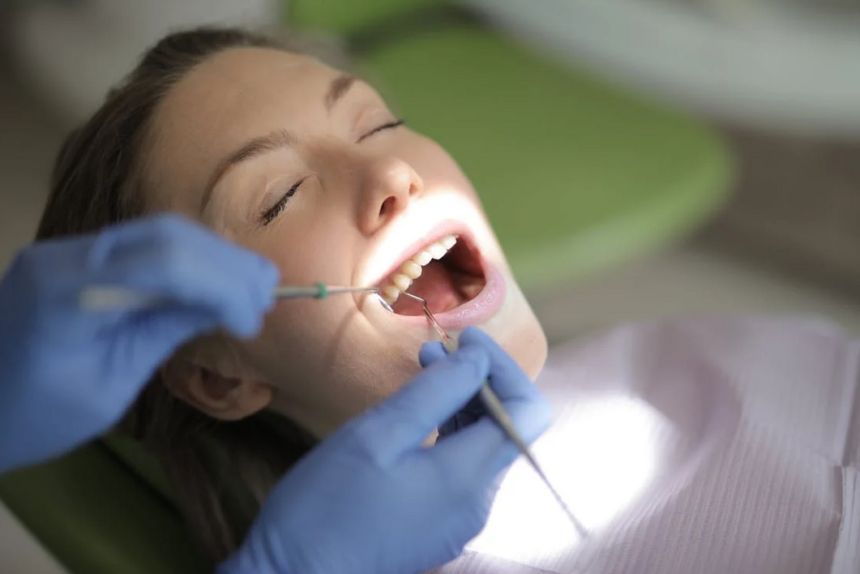Benefits of Teeth Bridge Services
Improved Oral Function
Teeth bridge services provided by a dentist in Orillia can significantly enhance oral function. By replacing missing teeth, bridges restore your ability to chew and speak properly. This not only makes eating more enjoyable but also ensures that you can maintain a balanced diet without restrictions.
Enhanced Aesthetics
A dental bridge can have psychological as well as physical benefits. It replaces lost teeth, thereby restoring your smile and, for many people, their self-confidence. Your face also retains its shape, as missing teeth can cause parts of your face to look sunken or collapsed.
Prevention of Teeth Shifting
One of the key benefits of teeth bridge services is the prevention of teeth shifting. When a gap is left by a missing tooth, the surrounding teeth may drift out of position. This can lead to bite issues and further dental complications. A bridge keeps your teeth in their proper place, maintaining the alignment and health of your entire mouth.
Properly fitted teeth bridges not only improve your oral function but also contribute to your overall well-being by preventing further dental issues.
The Teeth Bridge Procedure Explained
Initial Consultation
The first step in the teeth bridge procedure is the initial consultation. During this visit, your dentist will evaluate your oral health, discuss your options, and determine if a teeth bridge is the right solution for you. This consultation is crucial for planning the entire procedure. Your dentist may take X-rays or perform other diagnostic tests to get a complete picture of your dental health.
Preparation and Impressions
Once you decide to proceed, the next step involves preparing the abutment teeth. These are the healthy teeth on either side of the gap that will support the bridge. Your dentist will shape these teeth by filing down the enamel. This process is usually done under local anesthesia to minimize discomfort. After shaping the teeth, your dentist will take impressions using a computer scan or a putty-like material to create a mold. These impressions are sent to a lab where your permanent bridge will be crafted.
Steps involved in this phase:
- Administering local anesthesia
- Shaping the abutment teeth
- Taking impressions
- Sending impressions to the lab
Fitting and Adjustment
When your permanent bridge is ready, you’ll return to the dentist for fitting and adjustment. The temporary bridge will be removed, and the permanent one will be placed. Dental cement is typically used to secure the bridge to the abutment teeth. Your dentist will then check the fit and make any necessary adjustments. You may need to practice biting down with the new bridge to ensure it feels comfortable. Initially, it might feel a bit strange, but this sensation usually passes quickly.
Proper fitting and adjustment are essential for the longevity and comfort of your teeth bridge.
Common Issues with Teeth Bridges
Potential Complications
Teeth bridges, while effective, can come with certain complications. If the teeth supporting your bridge are weakened by decay or trauma, it can compromise the bridge’s stability. Additionally, the bridge itself can become loose or cracked over time. Common issues include:
- Weakened abutment teeth due to decay or trauma
- Stress on supporting teeth leading to fractures
- Plaque and bacteria buildup causing gum inflammation or cavities
Signs of Bridge Failure
Recognizing the signs of bridge failure early can save you from more extensive dental work later. Look out for the following symptoms:
- Your bridge becomes loose
- Your bite feels “off”
- Swelling around the gums underneath or surrounding the bridge
- Pain or sensitivity in the teeth supporting the bridge
Maintenance Tips
Proper maintenance is crucial for the longevity of your teeth bridge. Here are some tips to keep your bridge in good condition:
- Maintain excellent oral hygiene by brushing and flossing daily.
- Visit your dentist regularly for check-ups and professional cleanings.
- Avoid hard or sticky foods that can damage the bridge.
- Use an antibacterial mouthwash to reduce plaque buildup.
Regular dental visits and good oral hygiene are essential to prevent complications and ensure the longevity of your teeth bridge.
Cost of Teeth Bridge Services
Factors Influencing Cost
The cost of teeth bridge services can vary widely based on several factors:
- Number of teeth needed to fill the gap
- Materials used, such as composite resin, zirconia, or metal alloy covered in resin
- Complexity and difficulty of the placement
- Additional treatments for other dental issues, such as gum disease
- Geographic location of the dental practice
Insurance Coverage
Dental bridges are often more affordable than other options for replacing missing teeth and are more likely to be covered by dental insurance. Insurance plans typically cover a percentage of the cost, depending on the specifics of your plan. It’s essential to check with your insurance provider to understand your coverage.
Financing Options
For those without insurance or with limited coverage, there are several financing options available:
- Payment plans offered by dental practices
- Dental loans from financial institutions
- Credit cards specifically for medical expenses
It’s crucial to discuss all available options with your dentist to find a solution that fits your budget.
How to Care for Your Teeth Bridge
Daily Oral Hygiene
Caring for a dental bridge is similar to caring for your natural teeth. To keep your bridge in good condition:
- Brush and floss daily.
- Use a nonabrasive fluoride toothpaste.
- Clean underneath your bridge every day using floss threaders or interproximal brushes (tiny brushes made to go between your teeth).
Regular Dental Check-ups
Regular dental check-ups are essential to ensure the longevity of your teeth bridge. During these visits, your dentist will:
- Check the condition of your bridge.
- Clean areas that are hard to reach with regular brushing and flossing.
- Provide professional advice on maintaining your oral health.
Dietary Considerations
To protect your teeth bridge, consider the following dietary tips:
- Avoid extremely hard or chewy foods.
- Don’t chew on ice, pens, pencils, or your fingernails.
- Maintain a balanced diet to support overall oral health.
Proper care and maintenance of your teeth bridge can significantly extend its lifespan and keep your smile healthy and bright.
Alternatives to Teeth Bridges
When considering options for replacing missing teeth, it’s essential to explore all available alternatives to teeth bridges. Each alternative offers unique benefits and may be more suitable depending on individual needs and circumstances. Here are some common alternatives:
Dental Implants
Dental implants are a popular and effective alternative to traditional teeth bridges. They involve surgically placing a titanium post into the jawbone, which acts as a replacement root for the missing tooth. Once the implant integrates with the bone, a crown is attached to provide a natural-looking and functional tooth replacement.
Partial Dentures
Partial dentures are removable appliances that can replace one or more missing teeth. They consist of artificial teeth attached to a gum-colored base, which is held in place by metal clasps or precision attachments. Partial dentures are a cost-effective option and can be easily removed for cleaning and maintenance.
Resin-Bonded Bridges
Resin-bonded bridges, also known as Maryland bridges, are a conservative alternative to traditional bridges. They consist of a false tooth with metal or ceramic wings on either side, which are bonded to the back of the adjacent teeth. This option is less invasive and preserves more of the natural tooth structure.
When choosing the best alternative to teeth bridges, consider factors such as cost, durability, and the condition of your remaining teeth. Consulting with a dental professional can help you make an informed decision.
| Alternative | Pros | Cons |
| Dental Implants | Long-lasting, natural appearance | Higher cost, requires surgery |
| Partial Dentures | Cost-effective, removable for cleaning | Less stable, may feel bulky |
| Resin-Bonded Bridges | Minimally invasive, preserves tooth structure | May not be suitable for back teeth, less durable |
Conclusion
Understanding teeth bridge services is crucial for anyone considering this dental procedure. Dental bridges offer a reliable solution for replacing missing teeth, restoring both function and aesthetics to your smile. By familiarizing yourself with the different types of dental bridges, the procedure involved, and the benefits they provide, you can make an informed decision that best suits your dental needs. Always consult with a qualified dental professional to discuss your specific situation and to ensure that a dental bridge is the right choice for you. With the right care and maintenance, a dental bridge can significantly improve your oral health and quality of life.



